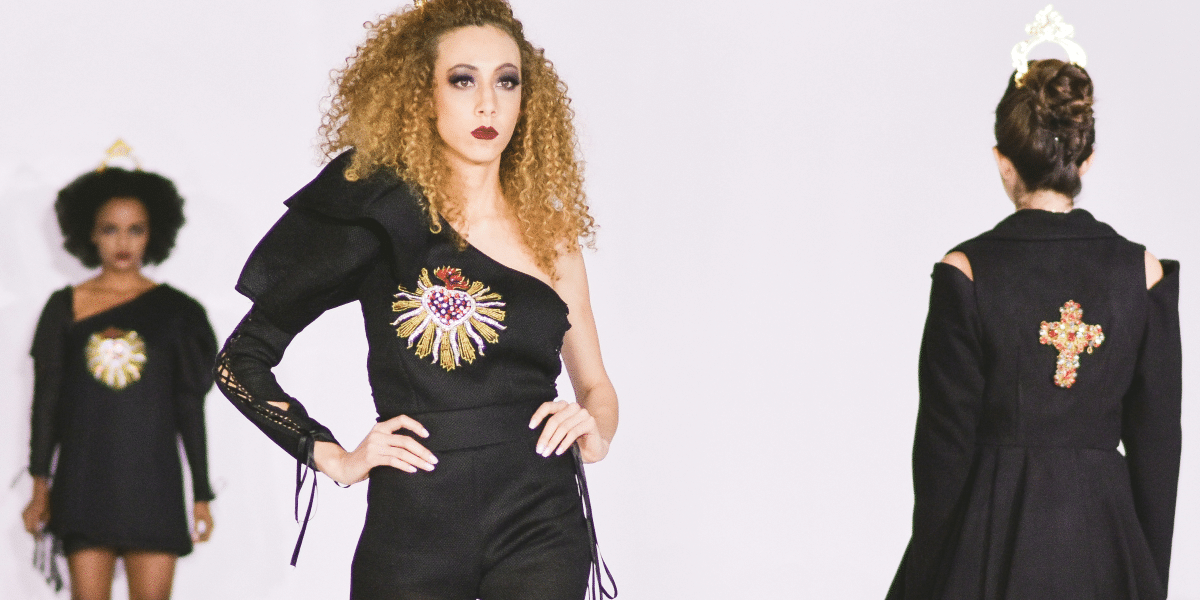The runway walk is more than a simple stroll—it’s a carefully honed performance, combining posture, attitude, and body language to showcase a designer’s creations. A great runway walk can create lasting cultural moments, but achieving it requires more than just stepping with confidence. Here’s a breakdown of the techniques that transform a model’s walk into a captivating display and the elements that make a catwalk truly iconic.
Key Elements of the Perfect Runway Walk
The foundation of any good runway walk starts with posture. It’s all about standing tall—shoulders back, spine straight, chin lifted—projecting confidence and grace. This posture is crucial because it ensures that the garment is shown to its full potential, while also helping the model exude poise and control. With just a few steps, the model must command the runway, and this begins with how they carry themselves. A model’s presence is key; they must exude an energy that demands attention even amid the chaos of a live show.
The walk itself is defined by subtle yet impactful movements. One of the signature components of a runway walk is the hip sway. This isn’t about exaggerated movements, but rather a natural fluidity. It’s a movement that’s in harmony with the rhythm of the walk, creating a sense of grace without trying too hard. The beauty of this sway lies in its ability to adapt to each model’s style, allowing them to add personal flair to an otherwise standard walk.
While the hips play a large role, the entire body engages in a runway walk. A slight arm swing counterbalances the stride—when the left leg steps forward, the right arm moves in sync. This creates a fluid and dynamic motion that adds visual interest. Relaxed shoulders are essential for maintaining the grace of the walk, ensuring that the model’s body remains at ease despite the pressure of the spotlight.
The Power of the Gaze
On the runway, the gaze is just as important as the stride. Models are trained to maintain a focused, intense look as they walk. Forget friendly smiles or flirtatious glances; it’s all about an unyielding, powerful stare that holds the audience’s attention. Whether it’s a dreamy, far-off look or a fierce, determined expression, the gaze adds depth and emotion to the walk.
The key to mastering the gaze is focus. Models are often advised to fix their eyes on a point at the end of the runway or visualize a target beyond the audience’s line of sight. This allows them to maintain a strong, confident presence despite the flashing cameras and bustling environment around them. As one runway coach explains, “Imagine you’re walking through a crowd, and everyone else is invisible. That’s the essence of a runway stare.”
The gaze isn’t just about focusing—it’s also about what emotions it conveys. The right look can completely alter the perception of the clothes being worn. For example, a flowing gown calls for a soft, ethereal gaze, while a sharply tailored suit demands a more intense, purposeful stare. The best models are chameleons, shifting their expressions to complement the mood of the clothing they’re presenting.
How Models Perfect Their Walk
Mastering the perfect runway walk takes consistent practice and feedback. Models often work with runway coaches who specialize in perfecting stride, posture, and overall performance. In addition to physical coaching, models also engage in mental preparation. Many practice in front of mirrors or with props, such as balancing books on their heads to perfect their posture. Coaches also focus on helping models refine their individual styles, whether it’s finding a signature hip movement or perfecting the timing of their steps.
Runway coaches emphasize that it’s not just about walking—models must embody the attitude the designer wants to communicate. A soft, flowing dress may call for a gentle, graceful walk, while edgy streetwear demands a more fierce, commanding stride. The walk becomes an extension of the model’s personality, transforming them into a living canvas for the designer’s vision.
Iconic Runway Moments in Fashion History
The runway is a space where fashion and performance intersect, often resulting in unforgettable moments that go beyond showcasing clothes. Some legendary walks have shaped the way we view the industry.
- Naomi Campbell’s Powerful Stride: One of the most iconic supermodels, Campbell’s walk became synonymous with confidence. Her presence on the runway embodied strength and power, earning her a reputation for commanding any space she entered.
- Alexander McQueen’s Groundbreaking Shows: Known for pushing boundaries, McQueen’s shows often featured unconventional and theatrical walks. From robotic movements to dramatic stomps, his runway became an art form in itself, adding layers of meaning to the clothing being presented.
- “Accidental” Falls: Even the most experienced models occasionally stumble. These unplanned moments, though embarrassing, have often led to some of the most talked-about moments in runway history. What sets great models apart is their ability to recover gracefully, turning a mishap into a defining moment.
As veteran runway coach points out, “A great runway walk is about more than just the mechanics. It’s about channeling the energy of the clothes, owning the space, and captivating the audience with your presence.”
A Walk to Remember
In the world of fashion, the runway walk is more than just a skill—it’s a form of expression that combines posture, movement, and attitude to create powerful moments. Aspiring models must put in hours of practice to master this art, from perfecting their posture to controlling their gaze and embodying the energy of the clothing. When done right, a runway walk not only elevates the clothes but also leaves a lasting impression on the audience, creating unforgettable moments in the world of fashion.
Published by: Martin De Juan








